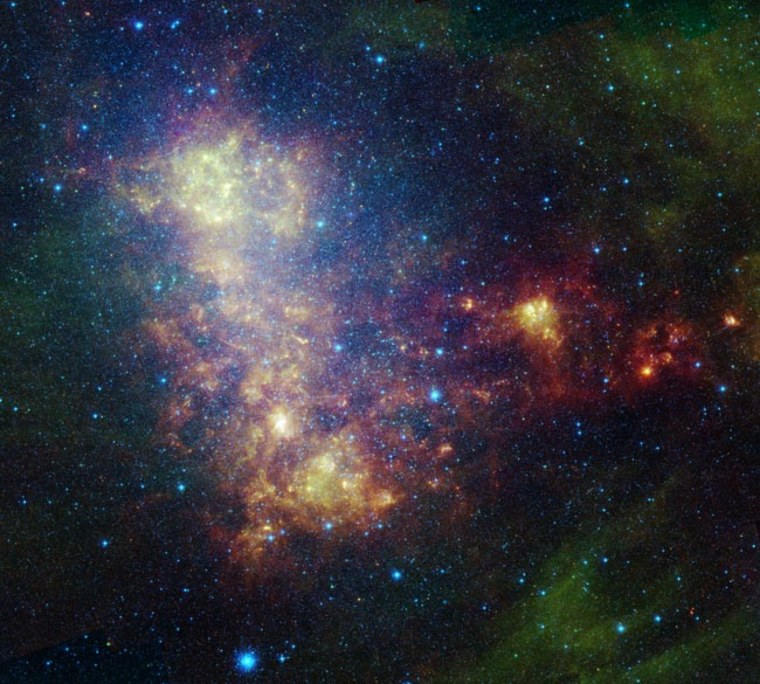Recycled piles of stardust — and the stars that suck them up and spit them out — have been revealed in a new image of a dwarf galaxy near our own Milky Way.
The image, taken by NASA's Spitzer Space Telescope, shows the Small Magellanic Cloud and gives astronomers an opportunity to study the entire life cycle of stars up close, as well as the different environments in which stars form. It was unveiled here today at the 215th meeting of the American Astronomical Society.
"It's quite a treasure trove," said Karl Gordon, the principal investigator of the latest Spitzer observations at the Space Telescope Science Institute in Baltimore, Md. "Because this galaxy is so close and relatively large, we can study all the various stages and facets of how stars form in one environment."
The Small Magellanic Cloud and its larger sister, the Large Magellanic Cloud are so-called dwarf galaxies and are visible to observers from Earth's southern hemisphere. The Small Magellanic Cloud is the farther away of the two at 200,000 light-years away. (A light-year is the distance that light travels in one year, about 6 trillion miles.)
Recent research has shown that the galactic pair is not orbiting the Milky Way, as was previously thought, but is instead just passing through the neighborhood. Both galaxies are less evolved than our own, and have bursts of new star formation that were triggered by interaction with the Milky Way, as well as with each other.
The image reveals the galaxy's youngest stars (appearing in red) embedded in thick dust, as well as the older stars (in blue) that eject that dust.
"With Spitzer, we are pinpointing how to best calculate the numbers of new stars that are forming right now," Gordon said. "Observations in the infrared give us a view into the birthplace of stars, unveiling the dust-enshrouded locations where stars have just formed."
Studying the Small Magellanic Cloud is also useful to astronomers because it is thought to be similar to the young galaxies that populated the universe billions of years ago.
The new image was taken before Spitzer ran out of its liquid coolant in May 2009 and began its so-called "Warm Mission."
